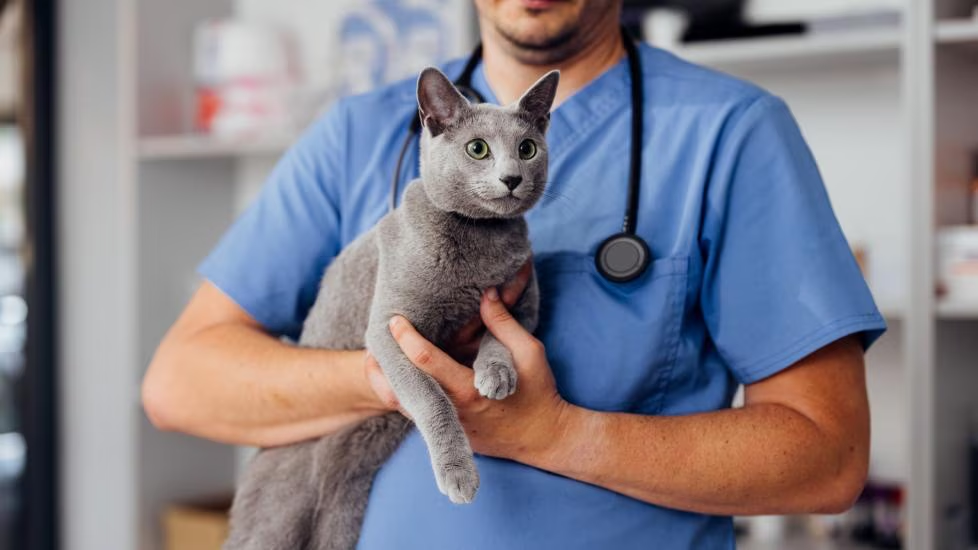Cat abscesses are a common yet often painful condition that can affect your furry friend. These localized infections under the skin can cause discomfort and, if left untreated, lead to serious health issues. Understanding what causes cat abscesses, how to recognize their symptoms, and how to treat them effectively is essential for every cat owner. In this guide, we will walk you through everything you need to know about abscesses in cats, including causes, symptoms, treatment options, and prevention tips to help your cat live a happy, healthy life.
What is a Cat Abscess?
An abscess is a localized pocket of pus that forms under the skin, typically as a result of an infection. In cats, abscesses are most often caused by bites or scratches from other animals, leading to bacteria entering the body through a puncture or scratch in the skin. The body responds by producing pus to isolate and fight the infection, which then forms the abscess. Though abscesses can develop anywhere on a cat’s body, they are most common around the face, neck, and limbs, particularly in cats that spend time outdoors or engage in fights with other animals.
What Causes Abscesses in Cats?
Several factors can lead to the formation of an abscess in your cat. Understanding these causes can help you prevent abscesses and minimize the risk for your pet:
- Bite Wounds:
The most common cause of abscesses in cats is bite wounds from other cats or animals. During fights, cats often bite one another, leaving behind puncture wounds that provide an entry point for bacteria. These bites are typically deep, and the bacteria in the saliva can quickly lead to an infection. - Scratches and Minor Injuries:
Cats may also get abscesses from scratches, cuts, or punctures that occur from encounters with thorns, rough surfaces, or other objects. Even small injuries can lead to the formation of an abscess if not treated properly. - Infected Puncture Wounds:
Puncture wounds that may not be immediately obvious, such as those caused by scratches or hidden injuries, can also become infected over time, leading to abscess formation. - Poor Hygiene and Grooming:
Cats with poor grooming habits or matted fur may be at a higher risk for developing abscesses. Dirt, bacteria, and other contaminants can become trapped in matted fur, increasing the risk of infection.
Signs and Symptoms of Cat Abscesses
Recognizing the signs of an abscess in your cat early can help ensure effective treatment. Some common symptoms of a cat abscess include:
- Swelling and Lumps:
Abscesses usually appear as soft, fluid-filled lumps or swelling under the skin. The area may be red, warm, and tender to the touch. Cats may also lick or scratch the affected area, which can worsen the swelling. - Pus Drainage:
If the abscess ruptures, it may leak pus, which can be yellow, green, or even brown, and have a foul odor. This drainage can help relieve some pressure but should not be ignored, as it signals an infection that needs attention. - Pain and Discomfort:
Cats with abscesses may show signs of pain, including avoiding touch to the affected area or becoming irritable. Your cat may also act more withdrawn or aggressive due to the discomfort. - Loss of Appetite and Lethargy:
If the abscess is causing significant pain or discomfort, your cat may lose their appetite, become lethargic, or seem less active than usual. - Fever:
As the body fights the infection, your cat may develop a fever. You may notice your cat acting unusually hot to the touch or experiencing an increased heart rate. - Difficulty Eating or Drinking:
Abscesses on or around the mouth can make it difficult for your cat to eat or drink, particularly if the swelling affects their ability to chew or swallow properly.
How Are Cat Abscesses Diagnosed?
If you notice any of the symptoms of an abscess, it’s important to take your cat to the veterinarian for a diagnosis. Your vet will examine the affected area and may perform a few tests to determine the extent of the infection. The process may include:
- Physical Examination:
The veterinarian will palpate the lump to assess its size, tenderness, and whether it’s draining pus. - Sample Testing:
A sample of the pus may be collected to identify the type of bacteria causing the infection. This can help your vet choose the appropriate antibiotics for treatment. - X-Rays or Ultrasound:
In cases where there is concern about the abscess affecting deeper tissues or bones, your veterinarian may perform imaging tests, such as X-rays or ultrasounds. - Blood Tests:
Blood tests may be performed to check for signs of a systemic infection or to assess your cat’s overall health during the infection.
How Are Cat Abscesses Treated?
Once diagnosed, abscesses in cats can be treated effectively with a combination of drainage, medication, and wound care:
- Abscess Drainage:
The first step in treating an abscess is usually to drain the pus. A veterinarian will make a small incision in the abscess to allow the pus to escape, which helps reduce swelling and pressure. In some cases, the vet may leave the incision open for a short time to allow any remaining fluid to drain. - Antibiotics:
After draining the abscess, your cat will likely need a course of antibiotics to fight the infection. It’s essential to complete the full course of antibiotics to ensure the infection is entirely eradicated, even if the abscess seems to heal. - Pain Relief:
Abscesses can be very painful, so your vet may prescribe pain relievers or anti-inflammatory medications to help alleviate discomfort and reduce swelling. - Wound Care:
At home, you may need to clean the wound and apply any topical treatments or antiseptic solutions as instructed by your veterinarian. Keeping the area clean is crucial to prevent re-infection. - Elizabethan Collar:
Your cat may need to wear an Elizabethan collar (cone) to prevent licking or scratching the abscess area, as this can interfere with the healing process.
Preventing Abscesses in Cats
While not all abscesses can be prevented, there are steps you can take to minimize the risk:
- Limit Outdoor Access:
Outdoor cats are more likely to get into fights with other animals. If possible, keep your cat indoors, especially if they are not spayed or neutered. - Spaying and Neutering:
Spaying and neutering your cat can help reduce territorial aggression and fighting, which is a common cause of abscesses. - Regular Grooming:
Regular grooming helps prevent mats in the fur, which can trap dirt and bacteria. It also gives you a chance to check for any potential injuries or abscesses. - Immediate Care for Wounds:
If your cat sustains a wound, no matter how small, clean it immediately with antiseptic and apply appropriate treatment. Prompt care can help prevent infections from developing into abscesses.
Conclusion
Cat abscesses are a treatable condition, but they can cause significant pain and discomfort if not addressed promptly. If you notice any signs of an abscess, take your cat to the veterinarian for proper diagnosis and treatment. Early intervention, along with regular grooming and outdoor precautions, can help minimize the risk of abscesses and keep your cat healthy and happy. Always consult with your vet for the best course of action to ensure your furry friend’s recovery and well-being.
By understanding how abscesses develop, how to treat them, and how to prevent future occurrences, you can provide your cat with the care they need to stay comfortable and healthy.

